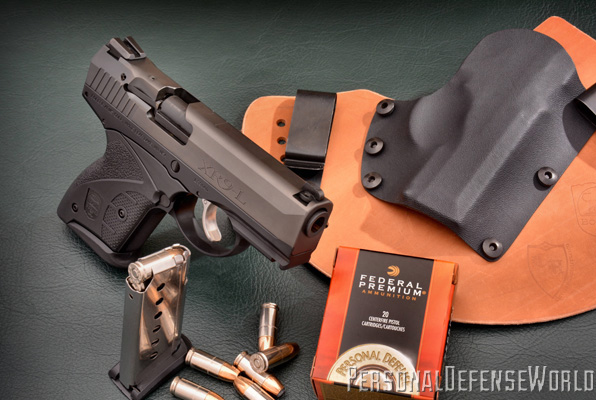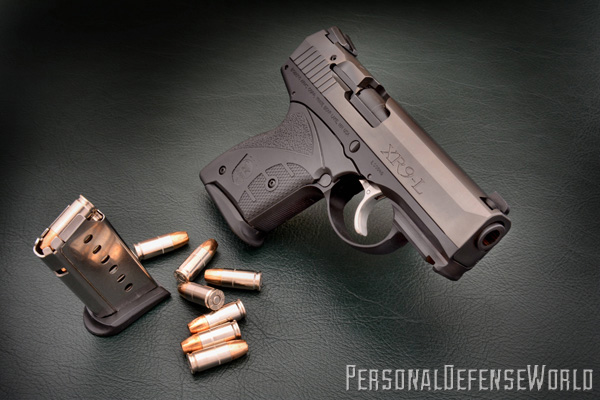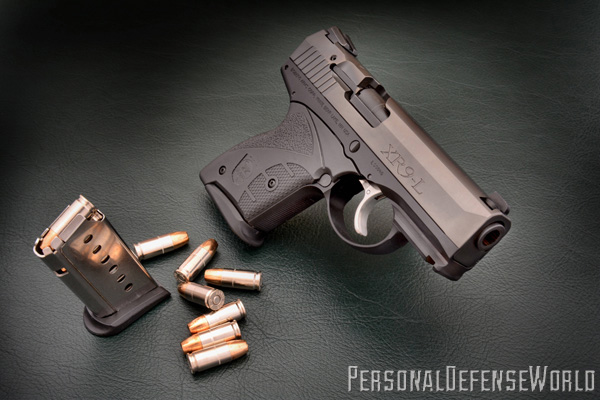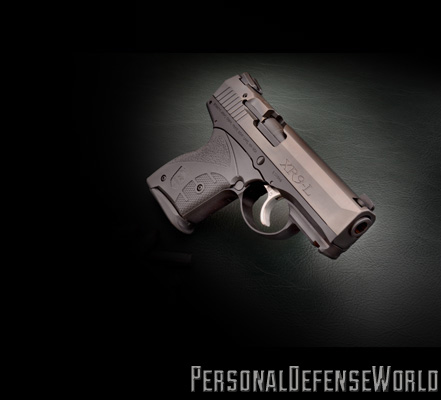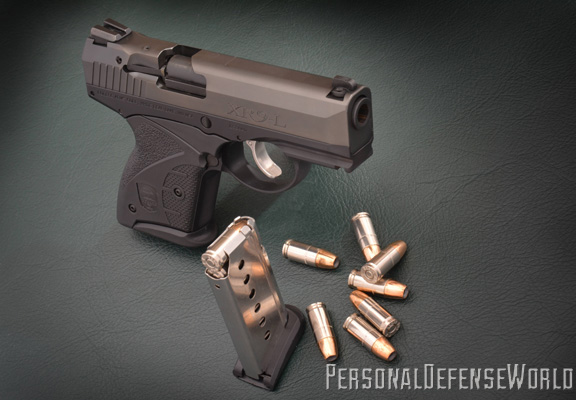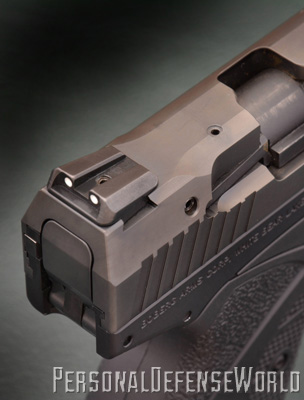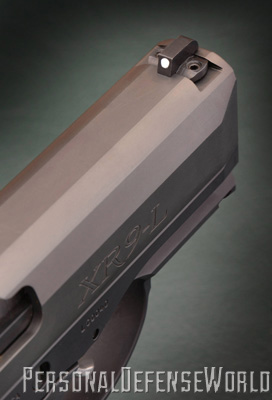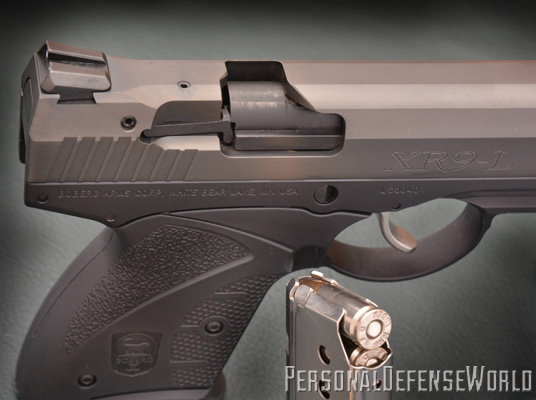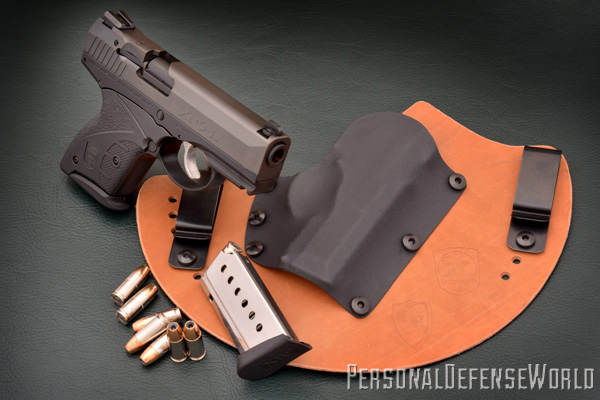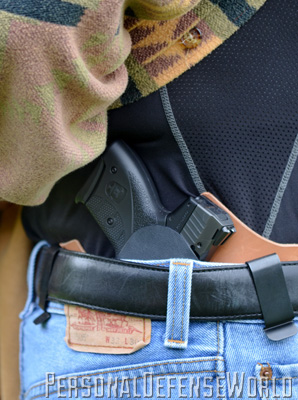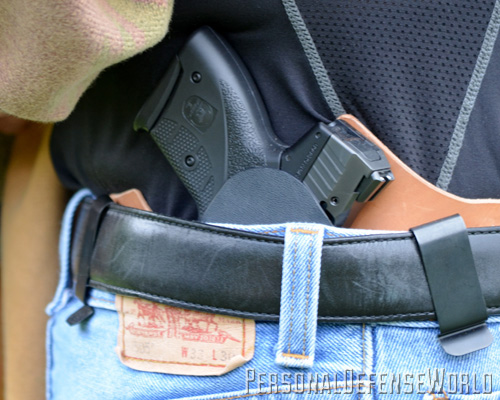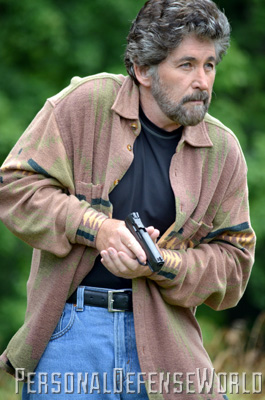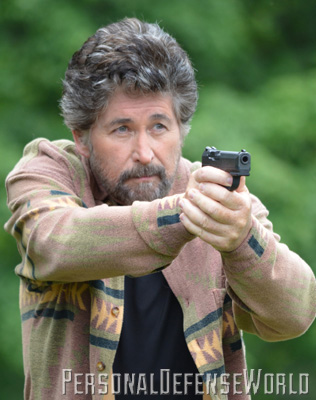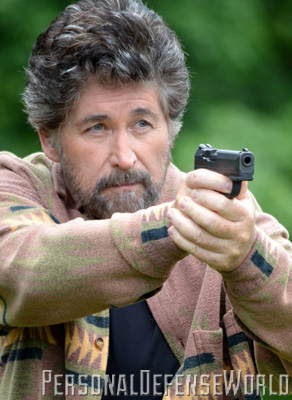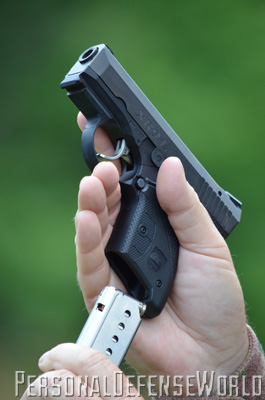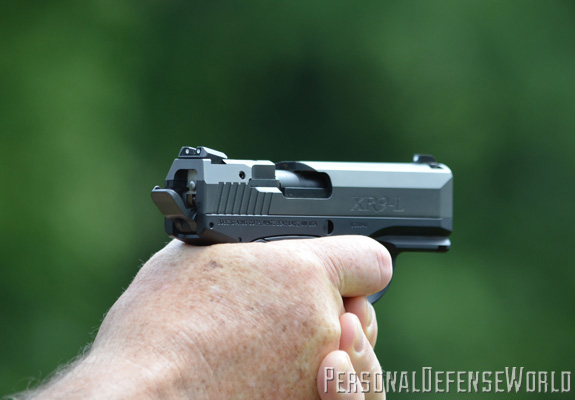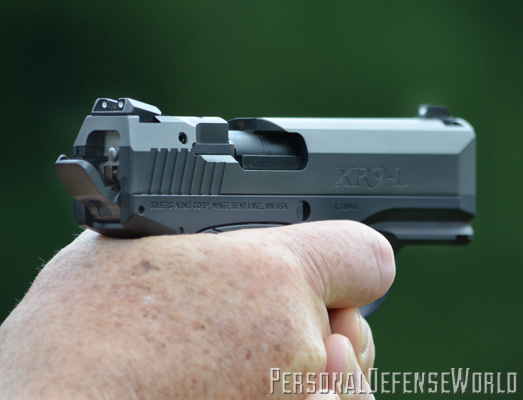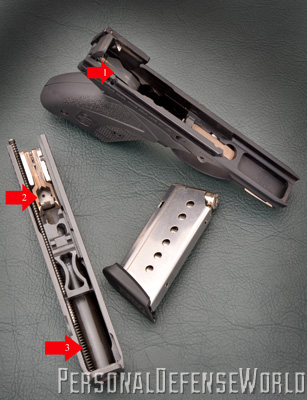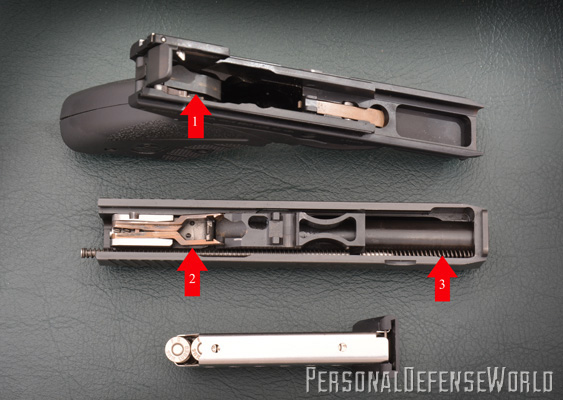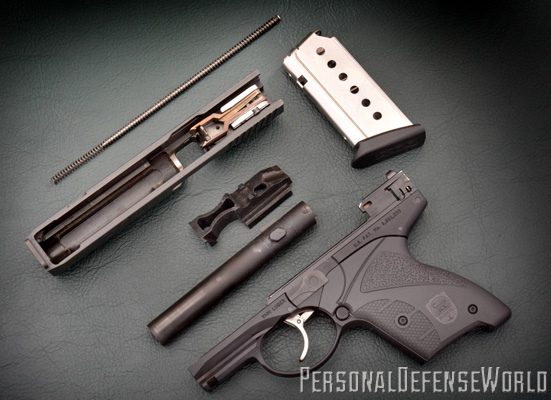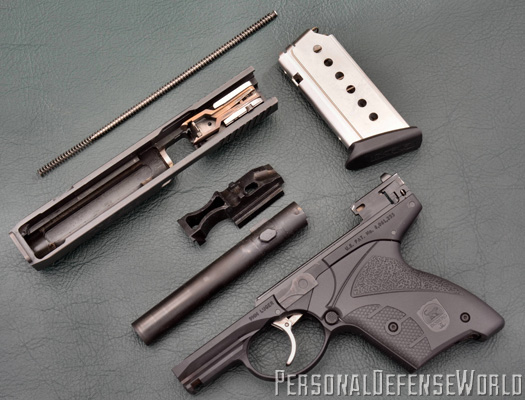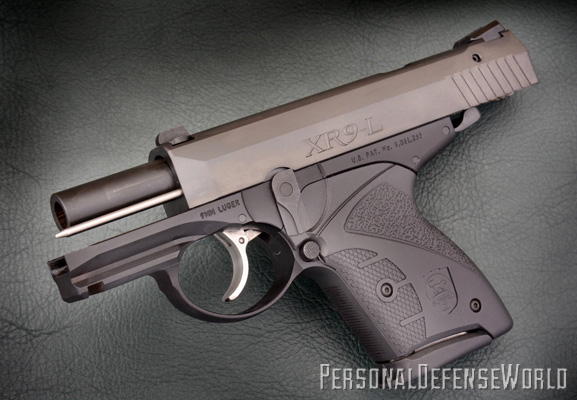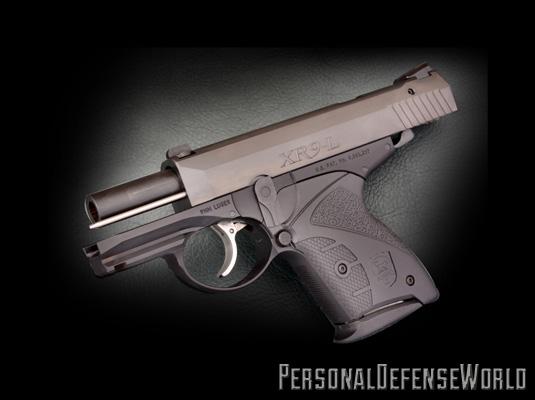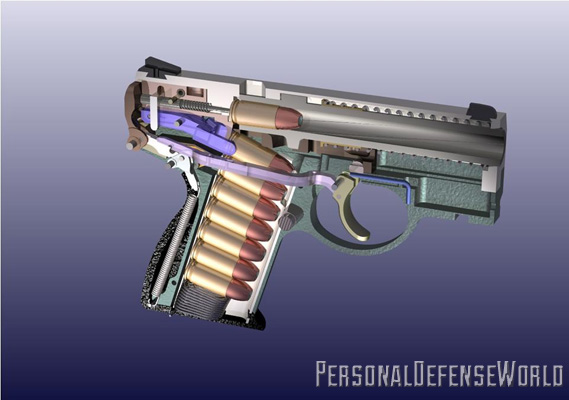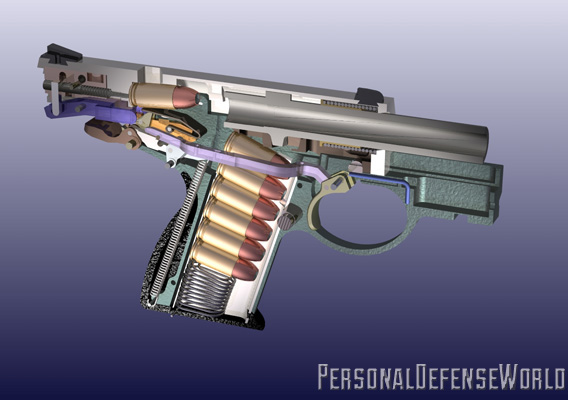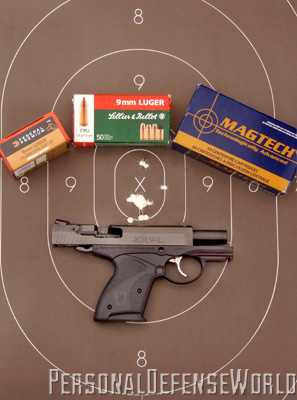A bulllpup is described as a modern rifle configuration, where the action is located behind the trigger group, so there is no wasted space for the buttstock as in conventional designs. This permits a shorter overall length for the same barrel length. Can the same be applied to a pistol? That would seem impossible, but it’s not. Arne Boberg figured out how it’s done. The secret is how cartridges are chambered, and that begins with the magazine. Boberg semi-autos use an innovative reverse magazine feeding system combined with a rotating barrel that doesn’t use a feed ramp. That leaves sufficient room to increase barrel length by an inch without increasing the gun’s overall dimensions! It sounds simple enough, but no one besides Arne Boberg was able to make it work. Boberg 9mm pistols put down a smaller footprint than a subcompact semi-auto of comparable barrel length, and they do it without creating excessively harsh recoil. “Most of today’s 9mm and larger-caliber subcompacts have one thing in common,” says Boberg. “They are chopped-down versions of full-sized guns. What you have are shorter barrels and shorter grips, all of which compromise accuracy and create guns with harsh recoil. I wanted to find a way to preserve barrel length, make the gun smaller and not compromise handling. That required a new approach to semi-auto pistol design.”
New Approach
While new technologies in guide rod and dual recoil spring designs have helped to mitigate harsh recoil in many of today’s subcompacts, the vast majority of 9mm, .40 S&W and .45 ACP semi-autos, no matter where or by whom they are manufactured, employ a variation of John Browning’s short-recoil mechanism. The Boberg doesn’t. Browning’s original design was made famous on the Colt Model 1911 and was later improved by him in the mid-1920s. His revisions were finally implemented by Fabrique Nationale in the Browning Hi-Power, which replaced the swivel link used on the 1911 with a solid camming lug. This was both more efficient in operation as well as less costly to manufacture as two parts were removed from the equation.
With a traditional 1911 design, the barrel and slide move back in unison during initial recoil until the barrel reaches the point where the shaft of the slide release lever, passing through the swivel link, stops the barrel’s motion and forces it to tilt down and disengage, allowing the slide to continue its reward travel. When the slide and barrel reengage on the closing stroke, the barrel tilts up to lock with the side. The Hi-Power design essentially operates the same way, only the swivel link and screw have been replaced with a camming lug integral with the barrel. Both Browning short-recoil designs have been the foundation for almost every large-caliber semi-automatic pistol produced for more than 80 years, whether copied exactly from the 1911 and Hi Power or modified by eliminating the external barrel bushing. But Arne Boberg discovered another way, finding it in the earliest history of semi-automatic pistol designs, back in 1897, the year John M. Browning patented a rotating barrel system. Browning’s design, along with several similar and promising variations achieved limited success in the very early 20th century, but no one, not even Browning, had successfully attempted what Arne Boberg was about to do: change the way the cartridge is loaded. I say successfully because, in 1900, British firearms designer Hugh Gabbett-Fairfax built a semi-auto pistol, albeit much larger, that used a system similar to the Boberg’s…
Advertisement — Continue Reading Below
GET THIS ISSUE NOW! at personaldefenseworld.com/subscribe/concealed-carry-handguns/.
